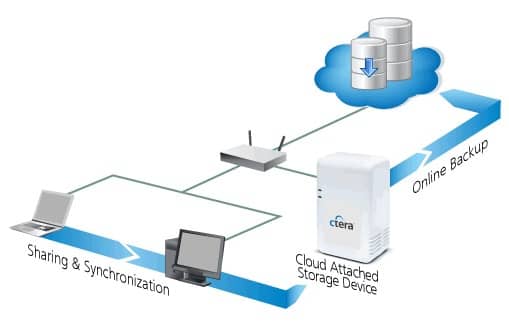If you want to safely store your digital data, but aren’t ready to shell out hundreds of dollars a year for the service, there are some reliable options available that don’t involve shady contracts or bait and switch practices. Cloud storage providers are popping up left and right, and to compete for your business, most if not all of them offer “freemium” versions of their services.
We recently came across a new service called Copy. The UI and features were worth a try for the Free plan.
Sign Up with this special link and get 10GB Cloud Storage Free – http://bit.ly/10o3YRx
Typified by small storage capacity and limited features, free cloud storage will most likely not satisfy your every need. After all, the intention is to attract consumers with intuitive UIs and rapid up/download speeds so they’ll eventually pay for the service. However, if you’re not against using a couple of cloud companies for different purposes, then you might be able to get by without ever touching your wallet. Below are four well-reviewed “freemium” options and their distinct strengths.
Dropbox
Released over 5 years ago, Dropbox continues to be a strong contender despite the surge in providers. Users experience a no-hassle interface, excellent file sharing, and automatic back ups every time you save a word file. Although it offers the smallest amount of initial free storage, Dropbox stands out from its competitors with a pretty neat referral system. You can earn as much as 18 GB of free storage by inviting your friends to sign up.
- Free storage: 2 GB
- Compatible with: Windows, Mac, Linux, Mobile
- Maximum file size: 2 GB
- Great for: file sharing
SkyDrive
Another veteran in the cloud landscape, SkyDrive has been reliably storing data for Microsoft enthusiasts since 2007. That’s worth factoring when you’re shopping around for cloud companies, as Microsoft has had more time than most for testing and redesign. Both Windows and Mac users can use SkyDrive as long as they have a Microsoft account, and as of now it is one of the few cloud storage options for Windows phones. The neatest feature of SkyDrive is perhaps its remote access capability, by which you can access a file from any of your connected devices, even if you’ve forgotten to upload it to the cloud. As long as you’re comfortable with a Windows interface (SkyDrive currently features a Windows 8 UI), SkyDrive comes out in front as a tried and true cloud storage option.
- Free storage: 7 GB
- Compatible with: Windows, Mac, Windows phones, Android
- Maximum file size: 2 GB
- Great for: device synchronization
Amazon Cloud Drive
Amazon already supports several companies in the cloud with their S3 service, but the online giant’s own Cloud Drive has some unique features that appeal to their existing client base. With their free download (which is so easy I did it on accident), you get 5 GB of storage, as well as music and video streaming. Cloud Drive’s biggest appeal lies in the fact that Amazon purchases of digital content do not count towards your 5 gigs. With the photo app you can also upload your pictures, though editing in the cloud is limited. The service also doesn’t provide much in the way of document storage or editing, so I would still look elsewhere for a more comprehensive cloud storage option. If you’re looking for a way to store your e-books for free and you’re familiar with Amazon’s ecommerce software, then Cloud Drive is a wonderful option.
- Free storage: 5 GB
- Compatible with: Windows, Mac, Android, Kindle
- Maximum file size: 2 GB
- Great for: frequent Amazon customers
Media Fire
At first glance, Media Fire blows away the freemium competition with an impressive 50 GB of storage for no charge. It is worth noting that the maximum file size is only 200 MB, so it would take quite a while to accumulate 50 gigs of data through Media Fire. As a result, users seem to be utilizing the site more for file sharing than storage, as download frequency and size are unlimited and bulk downloading is a snap. File encryption and privacy features ensure the safety of your data, but Media Fire’s appeal definitely lies in its streamlined file sharing. Keep an eye on these guys, hopefully they’ll increase the file size to accommodate more types of files and gain an even larger client base.
- Free storage: 50 GB
- Compatible with: Windows, Mac, Linux, mobile
- Maximum file size: 200 MB
- Great for: file sharing
